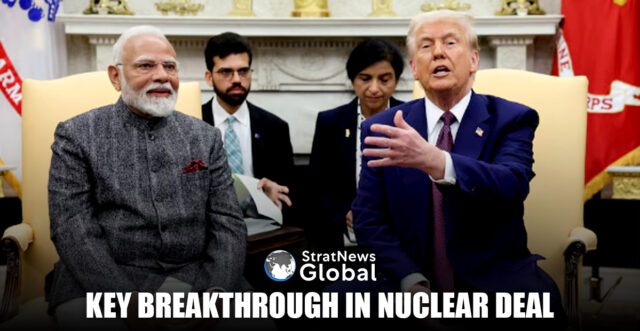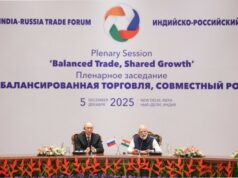Two decades after the India-US civil nuclear deal was signed, the United States Department of Energy has cleared a key hurdle by granting Holtec International regulatory approval to design and build nuclear reactors in India.
On March 26, the DoE approved Holtec’s application to build and design nuclear reactors in India under the “10CFR810” regulation, a key legal requirement under the U.S. Atomic Energy Act of 1954.
This authorisation permits Holtec to transfer “unclassified small modular reactor (SMR) technology” to three Indian firms: its subsidiary Holtec Asia, Tata Consulting Engineers Ltd (TCE), and Larsen & Toubro Ltd (L&T).
Holtec, founded by Indian-American Kris P. Singh, has been operating in India for over a decade, with an engineering unit in Pune and a manufacturing facility in Dahej, Gujarat.
Partial Approval
While Holtec initially sought authorisation for six Indian end-users—including state-run entities Nuclear Power Corporation of India Ltd (NPCIL), NTPC Ltd, and the Atomic Energy Regulatory Board (AERB)—the Indian government did not provide the necessary non-proliferation assurances for these entities.
However, Holtec has the option to request amendments in the future to include these organisations.
The current authorisation is valid for 10 years, with a review every five years. It also includes conditions ensuring that the transferred technology is used strictly for peaceful nuclear activities under International Atomic Energy Agency (IAEA) safeguards.
The Indian firms must not use it for nuclear weapons, military purposes, or naval propulsion.
Overcoming Long-Standing Barriers
Until now, U.S. regulations allowed American firms to export nuclear equipment to India but prohibited them from manufacturing or designing nuclear components locally.
This restriction had been a major obstacle for India, which aims to develop its own small modular reactor (SMR) capabilities and manufacture nuclear components domestically.
Under the new approval, Holtec must comply with several conditions, including ensuring that transferred technology is not shared with unauthorised entities or foreign countries without US government consent, submitting quarterly reports to the DoE on technology transfers, and prohibiting access to sensitive nuclear enrichment technology.
Strategic And Diplomatic Implications
The decision follows recent discussions to fully implement the US-India 123 Civil Nuclear Agreement, which was originally signed in 2007 but has seen little progress.
The renewed push is seen as a diplomatic victory for India, particularly at a time when the U.S. is prioritising trade balance and domestic manufacturing.
For India, this deal represents an opportunity to modernise its nuclear sector.
The country primarily relies on pressurised heavy water reactors (PHWRs), which use natural uranium and heavy water—a technology that is becoming outdated globally.
In contrast, most nuclear power plants worldwide use pressurized water reactors (PWRs), a category that includes Holtec’s SMR-300 design.
This development could also position India and the US as key players in the global SMR market, potentially challenging China, which has been aggressively expanding its nuclear energy footprint.
China sees SMRs as a strategic tool for its influence in the Global South, much like its dominance in the electric vehicle sector.
Regulatory And Legal Hurdles
Despite this progress, India still faces legal challenges in attracting foreign investment in its nuclear sector.
The Civil Liability for Nuclear Damage Act, 2010, which holds equipment suppliers liable in case of a nuclear accident, has deterred companies like GE-Hitachi and Westinghouse from investing in India.
Additionally, amendments to the Atomic Energy Act, 1962, are needed to allow private firms to operate nuclear plants—a sector currently restricted to state-owned enterprises.
Future Prospects
India is keen to integrate itself into the global SMR supply chain, both as part of its clean energy transition and as a strategic foreign policy move.
Small modular reactors (ranging from 30MWe to 300MWe per unit) are becoming increasingly relevant, especially with rising energy demands from tech companies.
Holtec’s SMR-300 design is among the seven advanced reactor projects backed by the US Department of Energy. In 2020, Holtec received $116 million to accelerate its SMR development, and the design is currently under review in the U.K. and Canada.
With this approval, India’s nuclear energy sector is poised for transformation, opening doors for private sector participation, enhanced technological expertise, and deeper U.S.-India collaboration in clean energy.





